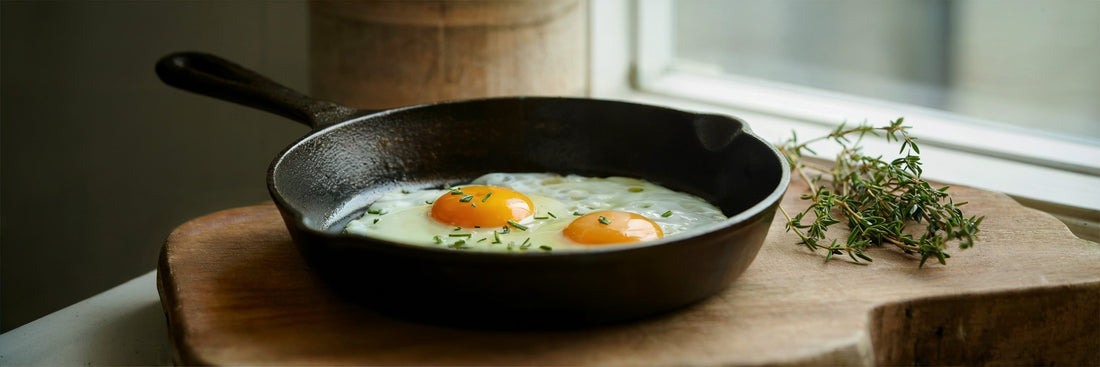
Seasoning Cast Iron: A Fall Kitchen Ritual (Spring, Too)
As the days shorten and cooler mornings arrive, it's the perfect time to tend to your kitchen essentials. Just as you care for your wooden cutting boards, your cast iron pans deserve seasonal attention—a simple ritual that ensures they'll serve your family for generations.
Seasoning cast iron creates a natural, non-stick surface and prevents rust, transforming a good pan into a kitchen heirloom. Quality cast iron cookware improves with proper care and develops character through years of use.
When to Season Your Cast Iron
Spring and autumn are ideal for this kitchen task. The moderate temperatures mean you can open windows to ventilate while the process works its magic. Start early in the day—open your kitchen windows, turn on the vent, and give yourself a morning to restore these essential tools.
What You'll Need
- Cast iron pan
- Dish soap (for initial cleaning only)
- Clean cloth or paper towels
- High smoke-point cooking oil (grapeseed or avocado oil)
- Aluminum foil
- Steel wool (for older pans with rust)
The Seasoning Process
Clean thoroughly. Wash your pan in warm, soapy water. For older pans with rust or stubborn residue, use steel wool to gently scrub until smooth. Rinse well and dry completely—you can place it on a warm stovetop to speed evaporation.
Prepare your oven. Line the bottom rack with aluminum foil to catch any drips. Preheat to 450-500°F (232-260°C).
Apply a thin layer of oil. Pour a small amount of oil onto a clean cloth and rub it into every surface—inside, outside, handle. The key is a very thin, even layer. Excess oil creates stickiness, so wipe away any visible pooling.
Bake upside down. Place your pan upside down on the top rack. This allows excess oil to drip off rather than pool inside. Bake for one hour.
Cool slowly. Turn off the oven and let the pan cool inside, undisturbed. The seasoning settles and solidifies as it cools. You can leave it overnight—just remember to remove it before your next baking project.
Repeat for best results. Two to three seasoning cycles build a stronger non-stick surface. Each thin layer adds to the durability and performance of your pan.
Daily Care
Once properly seasoned, cast iron is remarkably easy to maintain:
- Rinse with hot water after use
- Scrub gently with a brush—avoid soap when possible
- For stubborn bits, use plain table salt as a gentle abrasive
- Dry thoroughly (a minute on the stovetop helps)
- Apply a light coat of oil before storing
The more you use and care for your cast iron, the better it performs—developing that coveted natural non-stick surface that makes everything from morning eggs to evening cornbread a pleasure to prepare.
A Note on Quality Kitchen Tools
Like our wooden cutting boards, quality cast iron pans are investment pieces that serve your kitchen for decades. They work beautifully together—the substantial weight of cast iron paired with the natural beauty of hardwood creates a kitchen that's both functional and thoughtfully composed.
We think this griddle is an interesting addition to the kitchen (Note: These are affiliate links to recommended products. As an Amazon Associate, I earn from qualifying purchases at no additional cost to you.)
Caring for your kitchen tools is part of creating a home where wild meets welcome—where quality craftsmanship and natural materials support your family's daily rituals.

